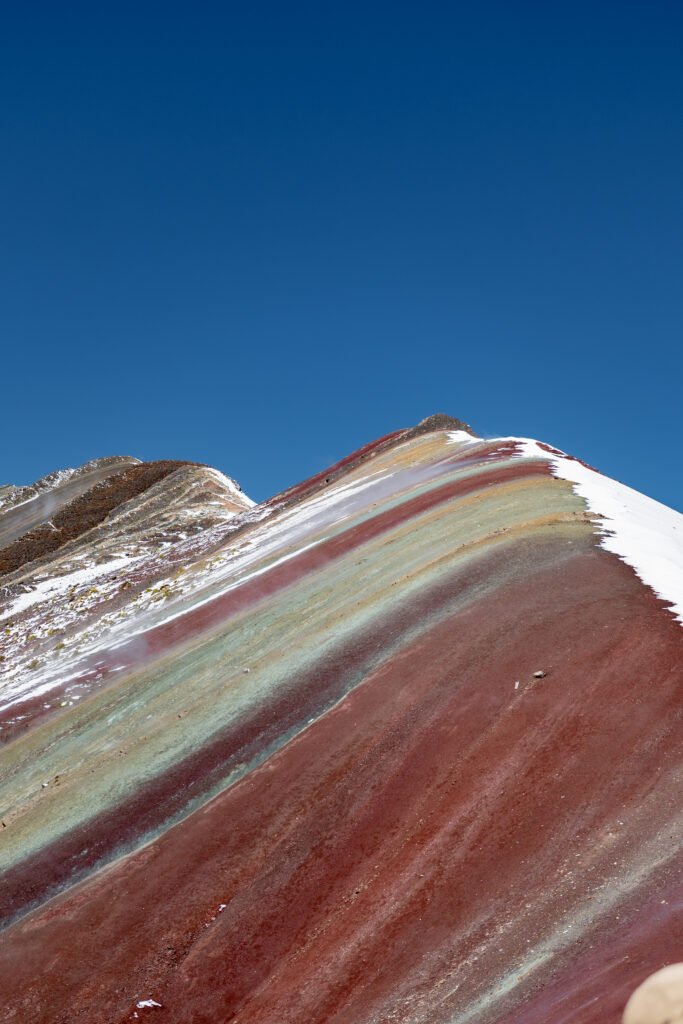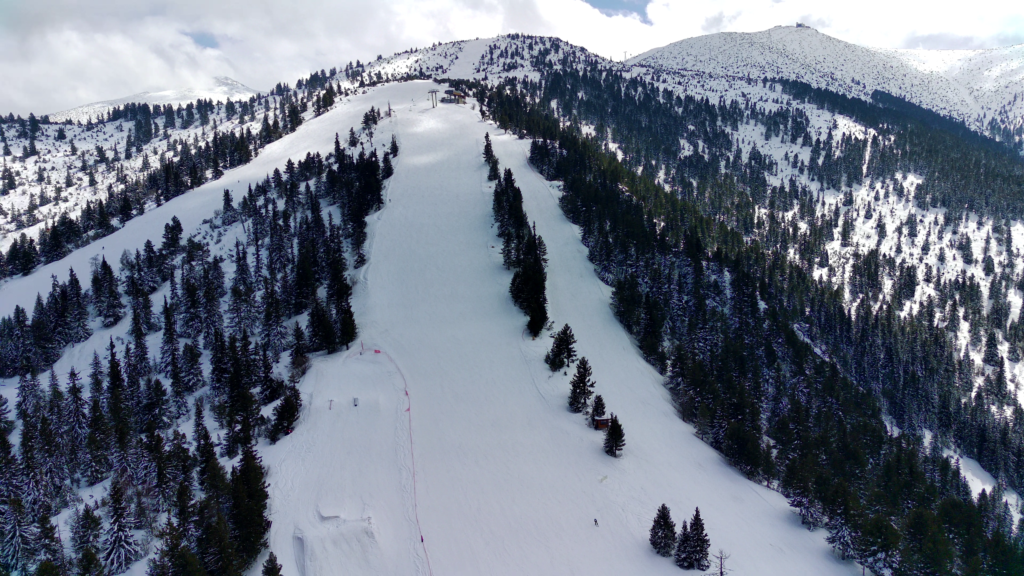In the midst of a winter wonderland, the last thing you want is to be stuck in your driveway, unable to leave your home due to a heavy snowfall. However, attempting to remove snow without a shovel may seem like an impossible task. Fear not, for there are alternative methods that can prove effective in clearing your driveway from the snowy grip of the season. With a few ingenious techniques up your sleeve, you can reclaim your driveway without the need for a traditional shovel.

Using Alternative Tools
Using a Snow Blower
When it comes to removing snow from your driveway without a shovel, one of the most efficient and convenient tools you can use is a snow blower. Snow blowers come in different sizes and types, but they all work by scooping up the snow and blowing it out of the way. They are especially effective for clearing large areas of snow quickly and with minimal effort. To use a snow blower, simply start the engine, adjust the chute direction, and guide the blower along your driveway, allowing it to do the hard work of removing the snow for you.
Using a Leaf Blower
Another alternative tool for snow removal is a leaf blower. While leaf blowers are primarily designed for clearing leaves and debris, they can also be effective at removing light snowfall. However, it’s important to note that leaf blowers work best on powdery or light snow, rather than heavy and wet snow. To use a leaf blower for snow removal, simply adjust the blower to a low speed setting and aim it at the snow, blowing it away in the desired direction. Keep in mind that a leaf blower may not be as efficient as a snow blower for larger amounts of snow.
Using a Broom
If you find yourself without a shovel and need to clear a light dusting of snow, a broom can be a useful tool. While it may take more time and effort compared to using a snow blower or leaf blower, a broom can still get the job done. Start by sweeping the snow off your driveway in a controlled manner, making sure to push it to the sides. Depending on the amount of snow and the size of your driveway, this method may require patience and some physical exertion.
Using a Push Broom
Similar to a regular broom, a push broom can also be used to clear snow from your driveway. The main advantage of a push broom is its wider head, which allows you to cover a larger surface area with each sweep. To use a push broom for snow removal, start by angling the broom head to effectively push the snow to the sides of your driveway. Use swift and firm strokes, making sure to clear the snow gradually without causing any damage to the underlying surface. While a push broom may take more effort than using mechanical tools, it offers a budget-friendly solution for light snow removal.
Using a Wet/Dry Vacuum
For smaller areas or hard-to-reach spots, a wet/dry vacuum can come in handy for removing snow from your driveway. This versatile tool is designed to handle both wet and dry substances, making it suitable for various cleaning tasks. To use a wet/dry vacuum for snow removal, attach the appropriate attachment (such as a wide floor nozzle) and set the vacuum to suction mode. Direct the nozzle towards the snow, allowing the vacuum to pick it up and collect it in the canister. While this method may not be as efficient as using a snow blower or broom, it can be a useful option for targeted snow removal.
Applying Salt or Ice Melt
Using Rock Salt
One of the most common methods for melting snow and ice on driveways is by using rock salt. Rock salt, also known as sodium chloride, works by lowering the freezing point of water, causing the snow and ice to melt. To apply rock salt, simply sprinkle it evenly across your driveway, paying extra attention to areas with heavy snow or ice buildup. As the salt comes into contact with the snow or ice, it will begin to melt, making it easier to clear away. However, it’s important to note that rock salt can be damaging to plants, concrete surfaces, and metal surfaces, so use it sparingly and carefully.
Using Calcium Chloride
An alternative to rock salt is calcium chloride. This deicing agent is known for its effectiveness even in extremely cold temperatures. Like rock salt, it works by lowering the freezing point of water and melting snow and ice. Calcium chloride is available in pellet or flake form and can be spread across your driveway in a similar manner to rock salt. It’s important to follow the manufacturer’s instructions on the packaging for optimal results and avoid excessive use, as calcium chloride can also cause damage to vegetation and some types of pavement.
Using Sand or Kitty Litter
In situations where melting snow and ice is not a priority, using sand or kitty litter can provide traction and prevent slips and falls on your driveway. While sand and kitty litter do not melt the snow, they create a gritty surface that improves traction and reduces the risk of accidents. Simply spread a generous amount of sand or kitty litter on the snowy areas of your driveway, focusing on spots that tend to be slippery. This method is particularly useful for steep driveways or areas where ice buildup is common. Remember to sweep away the sand or kitty litter once the snow has melted to avoid clogging drains or causing other issues.
Creating a DIY Snow Melting Solution
Using a Mixture of Dish Soap and Warm Water
When it comes to DIY snow melting solutions, a mixture of dish soap and warm water can be an effective and affordable option. Dish soap contains properties that help lower the freezing point of water, allowing it to melt snow and ice. To create the solution, mix a few tablespoons of dish soap with warm water in a bucket. Stir the mixture until the soap is thoroughly dissolved, and then pour it onto the snowy areas of your driveway. Allow the solution to sit for a few minutes, and then use a shovel or alternative tool to remove the softened snow. Keep in mind that this method may require multiple applications and may not be as effective in extremely cold temperatures.
Using Rubbing Alcohol and Water
Another DIY snow melting solution involves using rubbing alcohol and water. Rubbing alcohol, or isopropyl alcohol, has a lower freezing point than water, making it an effective ingredient for melting snow and ice. To create the solution, mix equal parts of rubbing alcohol and water in a spray bottle. Shake the bottle to ensure the ingredients are well combined, and then spray the mixture onto the snowy areas of your driveway. Allow the solution to penetrate the snow and ice, making it easier to remove. This method can be particularly useful for spot treatment or areas where manual removal is challenging.
Using Sugar and Water
Surprisingly, sugar can also be used to create a DIY snow melting solution. When mixed with water, sugar can lower the freezing point and help melt snow and ice. To make the solution, dissolve approximately one pound of sugar in a gallon of warm water. Stir the mixture until the sugar is fully dissolved, and then pour it onto the snowy areas of your driveway. Allow the solution to sit for a few minutes, and then use a shovel or alternative tool to remove the softened snow. While this may not be the most common method, it can be a viable option if you have limited supplies or prefer a more environmentally-friendly solution.
Utilizing Natural or Homemade Deicing Agents
Using Vinegar
Vinegar is a natural and eco-friendly deicing agent that can effectively melt snow and ice. The acidity of vinegar helps break down the frozen particles, making it easier to clear your driveway. To use vinegar for snow removal, mix equal parts of distilled white vinegar and lukewarm water in a spray bottle. Shake the bottle to ensure the solution is well mixed, and then spray it onto the snowy areas of your driveway. Allow the vinegar solution to sit for a few minutes before removing the softened snow with a shovel or alternative tool. This method is safe for vegetation and can be an excellent option for environmentally-conscious individuals.
Using Beet Juice
Beet juice is not only a nutritional beverage but also a natural deicing agent. The sugars in beet juice lower the freezing point of water and can effectively melt snow and ice. While beet juice may not be readily available for everyone, it can be purchased or obtained from local processing facilities during beet processing season. To use beet juice for snow removal, dilute it with water in a ratio of 3:1 (three parts water to one part beet juice). Pour the mixture onto the snowy areas of your driveway, allow it to sit for a short period, and then clear the softened snow using a shovel or alternative tool. This method is considered safe for vegetation and provides an environmentally-friendly solution for snow removal.
Using Coffee Grounds
If you’re a coffee lover, you’ll be pleased to know that coffee grounds can also be utilized for snow removal. Coffee grounds contain natural acids that help melt ice and snow effectively. To use coffee grounds for snow removal, sprinkle them generously onto the snowy areas of your driveway, paying special attention to spots with heavy ice buildup. As the grounds come into contact with the snow and ice, they will begin to melt it, making it easier to clear away. This method is safe for vegetation and can be an ideal option for individuals who have a ready supply of used coffee grounds.
Using Fertilizer
Believe it or not, certain fertilizers can also serve as effective deicing agents. Fertilizers that contain ammonium nitrate or urea are known to lower the freezing point of water and facilitate snow and ice melting. However, it’s important to note that not all fertilizers are suitable for this purpose, as some may contain ingredients that can be harmful to vegetation or the environment. If you choose to use fertilizer as a deicer, opt for one specifically labeled as safe for use on driveways and walkways. Follow the manufacturer’s instructions for application rates and procedures, and be mindful of any potential negative effects on plants or surrounding areas.
Using Alfalfa Meal
Alfalfa meal, a natural and organic fertilizer, can also be used as a deicing agent. The sugars in alfalfa meal help lower the freezing point of water, allowing it to melt snow and ice. To use alfalfa meal for snow removal, sprinkle a generous amount onto the snowy areas of your driveway. Allow the meal to sit for a short period, and then use a shovel or alternative tool to clear the softened snow. This method is safe for vegetation, provides an environmentally-friendly solution, and can be an excellent option for individuals who prefer natural alternatives for snow removal.

Preventing Snow Accumulation
Installing Heated Driveway Mats
If you’re looking for a long-term solution to prevent snow accumulation on your driveway, installing heated driveway mats can be a worthwhile investment. These mats are designed to melt snow and ice, ensuring that your driveway remains clear and safe. Heated driveway mats are typically made of durable materials and can be customized to fit any driveway size and shape. They are usually connected to a power source and equipped with a thermostat or timer for temperature control. By installing heated driveway mats, you can eliminate the need for manual snow removal and enjoy a snow-free driveway throughout the winter season.
Using a Snow Melting System
Similar to heated driveway mats, a snow melting system is a permanent solution to prevent snow accumulation on your driveway. This system involves installing electric heating cables or pipes beneath the surface of your driveway, which then heat up when activated. As a result, the snow and ice melt away, leaving your driveway clear and safe. Snow melting systems are typically controlled by a thermostat or timer, allowing you to adjust the temperature and operation according to your preferences. While the installation of a snow melting system may require professional assistance, it provides a hassle-free and efficient way to tackle snow accumulation on your driveway.
Applying a Snow Repellent Coating
Applying a snow repellent coating to your driveway can also help prevent snow accumulation and make snow removal easier. These coatings are typically made of a silicone-based or hydrophobic material that repels water and prevents snow from bonding to the surface. To apply a snow repellent coating, thoroughly clean your driveway to remove any dirt or debris. Then, follow the manufacturer’s instructions to apply the coating evenly across the surface of your driveway. The snow repellent coating acts as a barrier, preventing snow from adhering to the surface and making it easier to remove. While the effectiveness of a snow repellent coating may vary depending on the type of coating and weather conditions, it can be a practical option for reducing snow accumulation.
Clearing Snow with Vehicles
Using a Snow Plow
If you have access to a vehicle with a snow plow attachment, clearing snow from your driveway can be a relatively straightforward task. Snow plows are typically attached to the front of trucks or other suitable vehicles and are designed to push snow aside as the vehicle moves forward. To effectively use a snow plow, drive your vehicle in a straight line along your driveway, pushing the snow to the sides as you go. If necessary, make additional passes to ensure that all areas of your driveway are cleared. Keep in mind that using a snow plow requires skill and caution, as improper use or excessive force can cause damage to your driveway or the plow itself.
Using a Snow Pusher Attachment
Similar to a snow plow, a snow pusher attachment can be a useful tool for clearing snow from your driveway using a vehicle. A snow pusher attachment is a large, flat blade that attaches to the front of your vehicle, allowing you to push snow to the sides as you drive. This attachment is particularly effective for clearing deeper snow or compacted snow. To use a snow pusher attachment, position your vehicle in the center of your driveway and drive forward, pushing the snow to the sides. As with any vehicle attachment, it’s important to follow the manufacturer’s instructions and exercise caution to ensure safe and effective snow removal.
Using a Front-End Loader
If you have access to heavy machinery like a front-end loader, clearing snow from your driveway can be done effectively and quickly. Front-end loaders are equipped with a large bucket at the front, which can be used to scoop up and transport large amounts of snow. To use a front-end loader for snow removal, position the loader in the desired starting location and lower the bucket to the ground. Drive forward slowly, scooping up the snow as you go. Once the bucket is full, transport the snow to a suitable location away from your driveway and dump it. Repeat this process until your driveway is clear of snow. When operating heavy machinery, it is crucial to have proper training and experience to ensure safety and prevent damage to your property.
Using a Tractor with a Snowblower Attachment
Another option for clearing snow from your driveway is using a tractor with a snowblower attachment. A snowblower attachment is similar to a standalone snow blower but is specifically designed to be mounted on a tractor. The snowblower attachment is equipped with a rotating auger that scoops up the snow and throws it out of the way. To use a tractor with a snowblower attachment, position the tractor in the center of your driveway and engage the attachment according to the manufacturer’s instructions. Drive forward slowly, guiding the snowblower along your driveway, and allow it to do the work of removing the snow. This method is particularly effective for larger driveways or areas with heavy snowfall.

Hiring Professional Snow Removal Services
Contacting Local Snow Removal Companies
If you prefer to leave the task of snow removal to professionals, one option is to hire a local snow removal company. These companies specialize in clearing driveways, walkways, and other areas affected by snow and ice. When searching for a snow removal company, consider asking for recommendations from neighbors, friends, or family members who have utilized these services before. Take the time to research and compare different companies, paying attention to their reputation, experience, and availability. Contact the selected companies to inquire about their services, pricing, and any specific requirements you may have. By choosing a reputable snow removal company, you can ensure the prompt and efficient removal of snow from your driveway.
Considering Snow Removal Service Costs
Before hiring a professional snow removal service, it’s important to consider the costs associated with their services. The cost of snow removal can vary depending on factors such as the size of your driveway, the amount of snowfall, and the specific services provided by the company. Some companies charge a flat rate, while others may offer different pricing options based on the frequency of service or the extent of snow accumulation. When discussing the cost of snow removal with a professional service, inquire about any additional fees, such as for emergency or after-hours service. It’s also beneficial to compare the costs and services of different companies to ensure you’re receiving a fair price for quality snow removal.
Checking for Insurance and Credentials
When hiring a professional snow removal service, it’s crucial to verify their insurance coverage and credentials. Snow removal can be a potentially hazardous task, and accidents or damage to property can occur. By choosing a company that is insured, you can have peace of mind knowing that any unforeseen incidents or damages will be covered. Ask the snow removal company for proof of insurance and check that the coverage is up to date. Furthermore, inquire about the credentials and qualifications of the company’s staff, ensuring they have the necessary training and experience to handle the snow removal efficiently and safely. By taking these precautions, you can minimize the risk of any issues arising during the snow removal process.
Precautions and Safety Measures
Wearing Warm Clothing and Proper Footwear
When engaging in snow removal, it’s essential to prioritize your safety and well-being. Proper attire is crucial to protect yourself from the cold and potential hazards. Wear warm, layered clothing to insulate your body and keep you comfortable in freezing temperatures. Opt for waterproof and insulated jackets, pants, gloves, and hats to provide maximum protection from the elements. Additionally, wear proper footwear with excellent traction to prevent slips and falls on icy surfaces. Invest in boots or shoes with non-slip soles and sufficient insulation to keep your feet warm and dry. By dressing appropriately for snow removal, you can ensure your safety and maintain productivity throughout the task.
Using Protective Eyewear and Gloves
When removing snow, especially using mechanical tools, it’s vital to prioritize your eye and hand safety. Snow and ice particles can be thrown into the air, increasing the risk of eye injuries. To protect your eyes, wear safety goggles or glasses with impact-resistant lenses. These will shield your eyes from debris and minimize the risk of eye irritation or injury. Additionally, wearing gloves is essential to protect your hands from cold temperatures, potential cuts from sharp objects, and direct contact with ice or chemicals. Invest in durable, waterproof gloves with good grip to ensure comfortable and safe snow removal.
Being Cautious of Slips and Falls
Slips and falls are common hazards when dealing with snow and ice. It’s important to be cautious and take preventative measures to reduce the risk of accidents. Before starting snow removal, ensure that your walking surface is clear of any debris, such as loose objects or ice patches. Use salt, sand, or an alternative anti-slip material to improve traction and reduce the chance of slipping. Be mindful of uneven surfaces or hidden obstacles that may be concealed by snow. Walk slowly and deliberately, avoiding sudden movements or rushing. By being cautious and attentive, you can minimize the risk of slips and falls during snow removal.
Avoiding Overexertion
Snow removal can be physically demanding, and overexertion can lead to fatigue, muscle strains, and other injuries. It’s important to pace yourself and avoid pushing your physical limits. Take frequent breaks to rest and rehydrate, especially if you’re working for extended periods or in severe weather conditions. If you have any underlying health conditions, it’s advisable to consult with your healthcare professional before engaging in strenuous snow removal activities. Remember to listen to your body and stop if you experience any signs of exhaustion or pain. By avoiding overexertion and practicing proper physical care, you can stay safe and complete the snow removal task effectively.
Clearing Snow in Daylight
Whenever possible, prioritize clearing snow in daylight hours. Natural daylight provides better visibility, allowing you to identify potential hazards and obstacles more easily. Working in daylight also reduces the risk of tripping or falling due to obscured vision or shadows. If you have the flexibility, plan your snow removal tasks during daylight hours. If you’re unable to start or finish during the day, ensure that your work area is well lit using outdoor lighting or portable lights. Adequate lighting is essential to ensure your safety and enable efficient snow removal regardless of the time of day or weather conditions.
Clearing Snow in an Environmentally-Friendly Way
Using Environmentally-Friendly Ice Melt Products
If you’re conscious of the environmental impact of snow removal, there are alternative ice melt products available that are less harmful to the environment. Look for ice melts that are labeled as environmentally-friendly and contain ingredients such as calcium magnesium acetate (CMA) or potassium acetate. These compounds are less damaging to vegetation and water sources compared to traditional salt-based ice melts. When using environmentally-friendly ice melts, apply them sparingly and follow the manufacturer’s instructions to achieve the desired results. Additionally, consider sweeping away any excess ice melt from your driveway once the snow has melted to minimize any potential impact on the surrounding environment.
Shoveling Snow to Nearby Gardens
Another way to clear snow in an environmentally-conscious manner is by shoveling it to nearby gardens or landscaped areas. Shoveling the snow into these designated areas promotes the natural melting of snow without the need for chemical interventions. However, it’s important to ensure that these areas can handle the excess moisture from the melting snow and that it won’t cause any damage or flooding issues. Avoid shoveling snow directly onto delicate plants or areas with structures, and be mindful of the potential for further buildup if continuous snowfall occurs. Shoveling snow to nearby gardens or landscaped areas can be an eco-friendly solution for homeowners looking to clear their driveways without relying on chemicals or other methods.
Creating Paths for Melting Snow
If you prefer to let nature take its course, creating paths for melting snow can be an effective and environmentally-friendly solution. Rather than removing the snow entirely, designate specific areas of your driveway where you allow the snow to naturally melt over time. To create these paths, use a snow blower, broom, or alternative tool to clear narrower strips along the sides of your driveway, leaving the majority of the snow intact. These narrower paths offer a clear route for vehicles and pedestrians while allowing the snow to gradually melt away. By utilizing this method, you can reduce the need for excessive snow removal and minimize the environmental impact of snow management.
Considering Alternative Snow Removal Techniques
Using a Leaf Vacuum
If you have a leaf vacuum on-hand, it can be repurposed for snow removal. Leaf vacuums typically have a suction feature, which can effectively pick up lighter and powdery snow. Use the leaf vacuum on a low suction setting and slowly guide it across your driveway, allowing it to remove the snow. Keep in mind that leaf vacuums may not be as efficient as dedicated snow removal tools, and they may struggle with heavier or wet snow. However, if you already own a leaf vacuum, using it for light snow removal can be a cost-effective and handy alternative.
Using a Roof Rake
While not directly related to driveway snow removal, using a roof rake can be beneficial for removing snow from roofs and preventing ice dams. Ice dams occur when snow on the roof melts and refreezes at the edges, leading to potential damage and leaks. By using a roof rake, you can safely remove snow from the roof, reducing the risk of ice dams forming. Roof rakes typically have an extending handle and a wide head that can be used to reach and remove snow from the roof while standing on the ground. Ensure that you carefully follow the manufacturer’s instructions and take necessary precautions while using a roof rake to avoid injury or property damage.
Using Hot Water
In situations where snow needs to be removed from smaller areas or objects, hot water can be an effective tool. Boil a large pot or kettle of water and carefully pour it over the snow, allowing it to melt away. This method is particularly useful for clearing snow from steps, walkways, or areas near entrances. However, it’s important to exercise caution while handling hot water and to be mindful of any potential freezing or re-icing that may occur later. Additionally, keep in mind that hot water should not be used on larger areas, as it may refreeze and create more hazards. Use this method sparingly and in appropriate situations where manual snow removal is not feasible.
In conclusion, removing snow from your driveway without a shovel is possible with a variety of alternative tools and methods. From utilizing snow blowers and leaf blowers to creating DIY snow melting solutions and considering environmentally-friendly options, there are numerous ways to tackle snow removal effectively. Whether you choose to hire professional snow removal services or take on the task yourself, it’s essential to prioritize safety, consider environmental factors, and select the most suitable techniques for your specific needs. By following these guidelines, you’ll be well-equipped to handle snow removal without a shovel and maintain a clear and safe driveway during the winter season.

